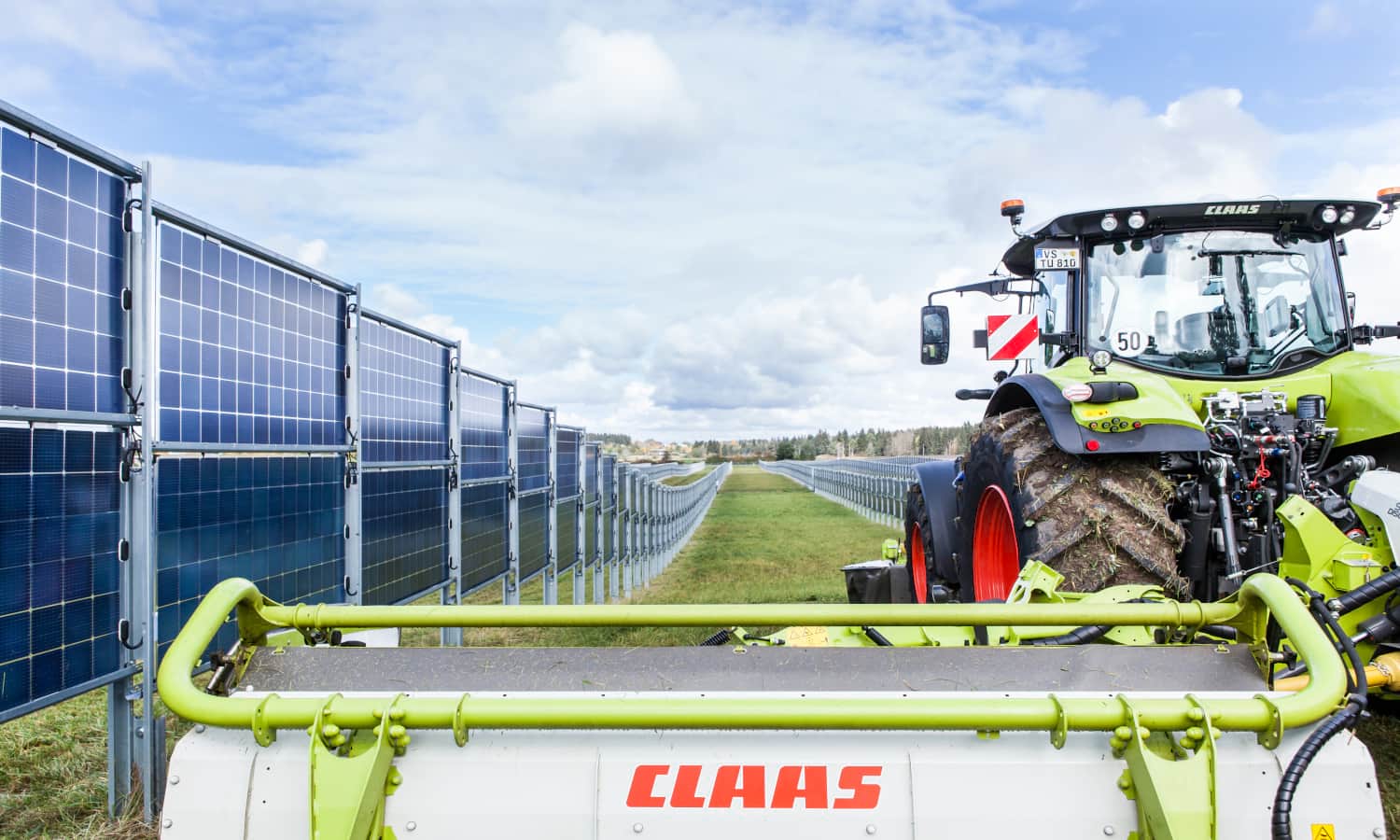Harvesting solar energy alongside food would make American agriculture more sustainable and profitable, research from Oregon State University suggests.
Dubbed agrivoltaics or agri-PV, this approach features raised semi-transparent panels that optimize agrarian space by producing zero-carbon energy. They can save water and boost yields by shading and efficiently sharing light with crops and protecting them from wind, cold, fire, and other worsening weather events.
Published in the journal Sustainability, the study found that sourcing one-fifth of America’s electricity via this solution would cost under one percent of the federal budget and cut as much atmospheric carbon as eliminating 71,000 cars each year. And it would generate upwards of 100,000 rural jobs.
“Agrivoltaics aligned very well with the Green New Deal,” Kyle Proctor, first author and graduate fellow at Oregon State University, tells Food Tank. “Everyone benefits from lower GHG emissions and more renewable energy, and rural areas also experience investment in their communities.”
Previous work from the Universities of Arizona and Maryland and the National Renewable Energy Laboratory, however, noted that broad adoption could be difficult because elevating solar arrays is expensive. Proctor argues that costs have fallen significantly over the last decade, with solar now the cheapest electricity source ever in parts of the world.
In dry places, he says, “the reduced water demand and the agricultural income can easily offset the increased price of raising the panels.”
While the innovation could aid corn, tomatoes, and any plant overexposed to sun, Proctor says field investigations have mostly involved leafy greens. The shade improves output by prompting them to grow leaves to maximize the decreased sunshine.
The idea of combining solar generation and agriculture originated in space-constrained Japan in the 1980s, according to Eva Vandest, chair of SolarPower Europe’s Agri-PV Workstream. It formed in 2020 to promote the emerging field in the European Green Deal’s implementation.
Agrivoltaics shows “huge” potential to “find synergy” between often-competing energy and farming land-use interests, she tells Food Tank. From Ireland to Portugal to Austria, it’s taking off thanks to Europe’s strong incentives for PV and awareness that “farmers are on the frontline of climate change.”
Farmlands are key to realizing the European Union’s renewable energy target, Vandest says. And because arrays can stand over three meters aboveground and offer many possibilities for adaptation with infrastructure such as greenhouses, agri-PV provides a versatile way to enhance vegetable, fruit, and livestock systems.
“It’s a very smart technology,” Vandest says, allowing experimentation with height, spacing, transparency, sensors, and algorithms to alter light capture, control local conditions, and promote plant productivity.
Next2Sun, for instance, has been installing vertical photovoltaic arrays since 2015. Simultaneously facing East and West, they harness both the morning and evening sunlight peaks and supply more energy than regular PV, Lucas Pendola, mechanical engineer at the German startup, tells Food Tank.
The company has five agri-PV farms in Europe and South Korea. Its biggest plant powers 1400 homes and grows hay, and it’s testing crops like potatoes to understand PV’s impacts in different climates.
Next2Sun intends to build around 10 agrivoltaic facilities in 2021, and it’s collaborating with French oil corporation Total to launch more during the coming years. The startup is eyeing the U.S., too, particularly green-leaning California and the Northeast.
In Massachusetts, BlueWave Solar is already bringing solar power to family farms. Vandest thinks America could emulate Europe by expanding agrivoltaics to curb carbon pollution, especially since farming contributes greatly to the climate crisis.
“Solar energy is the demonstration of sustainable energy, so it’s logical that we have sustainable agriculture with it,” she adds.
To encourage agri-PV, Proctor tells Food Tank, the government could amend common restrictions on erecting solar panels on valuable farmland. “Taking into account the value of dual-use projects and reflecting that in legislation could make it easier for new agrivoltaic projects to get started,” he says.
Despite the large funding needed to scale up agri-PV, he believes “some would be happy to pay if it means cleaner air for their children, greater American energy independence, and support for essential agricultural communities.”
As available land dwindles, Pendola considers recent developments “just the beginning.” With PV booming, he says, “every market is going to face this sooner or later.”
Photo courtesy of Next2Sun GmbH











